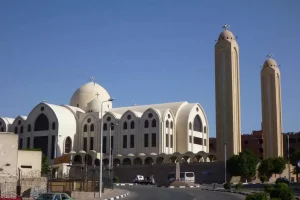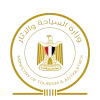Brief History of Coptic Egypt

Birth of the Coptic Church
The History of Coptic Egypt is a fascinating part of the entire Egyptian History. The Coptic Church based on the teachings of Saint Mark. He brought Christianity to Egypt during the reign of the Roman emperor Nero in the first century. According to tradition, Apostle Mark founded the first church of Egypt in Alexandria in the first century.
St. Mark, the Evangelist, is the traditional name of the author of one of the Gospels. He died in Alexandria on April 25, 68. The tradition identifies Saint Mark as a companion of Saul of Tarsus (Saint Paul). He was the first to write about the life of Jesus around the year 56. Thus, the other synoptic eventually adopted the exposure scheme of San Marcos. According to tradition, St. Mark went to Alexandria after the martyrdom of St. Peter, where he wrote the Gospel. He was martyred in this city by dragging his body through the streets by a team of horses around the years 68-80 AD.
Coptic Egypt during Roman Empire
St. Peter was the first founder of the Roman Catholic Church. Likewise, St. Andrew is the first Patriarch of the Orthodox Church. He is also the first Patriarch of the Coptic Church, based in Alexandria. The word Coptic has an ancient Egyptian origin. It means ‘Egyptian. It came from the Greek word Aigyptos, derived from Hikuptah, one of the names of Memphis, the first capital of Ancient Egypt. The modern use of the term “Coptic” describes Egyptian Christians and the national church of Egypt.
During the time of Roman Emperor Nero, many Egyptians embraced Christianity. Christians were targets of persecution by the Romans many times from the first century to the fourth century. However, emperor Gallienus (260- 268) issued a decree to grant religious freedom to Christians. Consequently, Egypt established several churches. The time of great persecution was during the reign of Emperor Diocletian (284-305). The Egyptian Christians declared the year 284 AD as a dark period. It was the year of the rise of this emperor to the throne of Rome as the beginning of the Coptic Calendar or the Calendar of Martyrs. Nowadays, people still use this calendar. Furthermore, Christianity spread through Egypt against the will of the Roman emperors.
In 313 AD, Emperor Constantine declared his famous decree, the Edict of Milan. He recognized Christianity as one of the major religions of the Roman Empire.
Egyptian Christians during Roman Empire
Several Christians grew up in Egypt. Moreover, there was a movement of violence against the pagans and Christians. Meanwhile, a dispute over the nature of Christ appeared in Egypt. Especially among ‘Arius‘ who considered Christ: a messenger of God and has no divine nature. While Alexander, Patriarch of Alexandria, rejected this dichotomy, confirming the divine nature of Jesus.
Following the year 325, the emperor called the fathers to hold the council in Nicaea, a city of Anatolia, to discuss this issue. In the first ecumenical conference of bishops, they argued whether Jesus is one person with two natures (divine and human) as previously watched over the orthodoxy or a person with just human nature.
Among those present, Athanasius found himself a new deacon and companion of Bishop Alexander of Alexandria. He distinguished himself as the “greatest defender against the Arians.” The Council of Nicaea rejected the Aryan dichotomy and confirmed the dichotomy of Alexandria. Arius was excommunicated. Following this, Arius could reconcile with the emperor. He was called so another council was held in Tire in 334 annulling the previous decrees of the council of Nicaea. Eventually, Athanasius exiled to France in 336.
Then in Constantinople, Arius died, probably because he died poisoned. Egyptians, especially in Alexandria, considered Athanasius and his successors true religious leaders.
Emperor Theodosius
In 391, Emperor Theodosius recognized Christianity as the only religion in the empire. It led to a wave of violence against the ancient temples and pagan philosophical schools, especially in Alexandria. In the fifth century, the patriarchs of Alexandria had great power in the Christian world.
The Alexandria church adopted the doctrine of the divine nature Monophysite. On the other hand, the Constantinople Church adopted the Doctrine of Biphasic (human and divine). In 451, the Ecumenical Council of Chalcedony was held in Asia Minor under the leadership of the Emperor. It repudiated the doctrine of Eutyches on Monophysitism and declared the human and divine duality of Jesus. The affirmation of the existence of two natures in the one Person of Christ, Diofisismo against Monophysitism, led to a schism. It resulted in the separation of the Egyptian church from Constantinople and Rome.
The Egyptian church rejected the decisions of the Council of Chalcedony. Afterward, the Patriarch of Alexandria Dioscorus was exiled. The Roman Emperor sent the patriarchs to rule the church of Alexandria. People supported the national patriarchs until the Islamic conquest in 641. Likewise, the Arab Muslims recognized the leaders of the Coptic Orthodox Church. They also tolerated religious matters.
Monasticism was born in Egypt. He was instrumental in forming the character of the Coptic Church of submission and humility. Thanks to the teachings and writings of the Great Fathers Deserts of Egypt, Monasticism started in the last years of the third century. It flourished in the fourth century. The Copts celebrate Christmas on January 7.
More Information
Egypt Christians constitute about 10% of the total population. However, the number of Coptic Orthodox rite Christians is more than 40 million worldwide. Mainly, they are distributed by Egypt (10 million), Ethiopia (30 million), Eritrea (2 million), Palestine and Sudan.
Christianity is a minority religion in Egypt. People know Egyptian Christians as Coptic. They are approximately 10% of the population. More than 95% of Egyptian Christians belong to the Coptic Orthodox Church of Alexandria, an Oriental Orthodox Church. The Coptic Church is the largest Christian community in the Middle East. It has about 4 to 8 million followers in Egypt and 3 to 4 million abroad. According to another estimate, the Coptic Orthodox Church is the Main Christian church in Egypt. It has between 6 to 11 million members. Most of them live in the provincial capital of Upper Egypt Aasut, El-Minya, and Cairo.
There are a lot of historical sites from the period of Coptic Egypt. All over the country, there are very ancient Churches and monasteries from this time.





